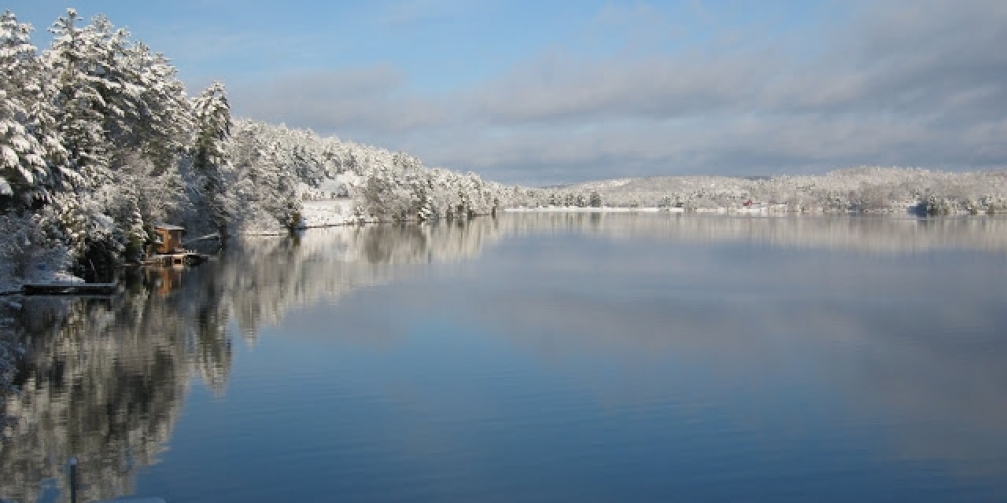WHEN WAS EURASIAN MILFOIL CONFIRMED?
In 2019, Mississippi Valley Conservation Authority (MVCA) had reported to Invasive Species Ontario that Mazinaw has “Eurasian Milfoil”. Unfortunately, it was not reported to the Mazinaw Property Owners Association (MPOA) at the time. In the summer of 2022, it was discovered by our former Lake Steward, Vern Haggerty, and confirmed with the MVCA. However, it was likely introduced to the Lake several years ago. Since then, the Board and its Blue Lakes Committee has been working tirelessly consulting with a broad array of mixed discipline experts and Lake Associations to formulate an Action Plan, which is being implemented on an ongoing basis depending on available resources.
WHAT IS EURASIAN WATERMILFOIL?
EWM is an extremely aggressive invasive aquatic plant that forms thick underwater stands of tangled stems and dense floating mats of vegetation. It is an invasive aquatic plant native to Europe, Asia and North Africa. It was first documented in North America in 1942 in the District of Columbia. It was most likely brought to this continent in the ballast of a ship and has since spread to almost every continental state and throughout Canada.
WHY IS IT A PROBLEM?
If we don’t do something soon, it’s not a question of IF milfoil will take over our lake. Research shows that if action is not taken, milfoil can take over a lake in just a few years. If that happens, make no mistake, it will affect everyone in our community as follows:
- Ecological issues: The lake’s ecosystem will be altered. EWM will displace important native plants thus harming fish and wildlife habitat. Dense floating vegetation becomes breeding habitat for mosquitoes. Stagnant oxygen-depleted conditions are often found in association with dense beds of EWM. Sudden nutrient release caused by late-season die-back of extensive plant beds may cause nuisance algae blooms.
- Recreational issues: Recreational activities such as boating, canoeing, kayaking, paddle boarding, fishing, and swimming are impeded by dense growth at or near the surface, to name a few
- Economical issues: Due to the above ecological and recreational issues, EWM choked shorelines can depress real estate values up to 20%; and our local tourist-dependent economies will suffer from declined visitor rates. Costs to manage EWM growth are borne by either local citizens, lake management organizations, and/or local governments
HOW TO IDENTIFY IT?
Refer to the documents section of the Eurasian Milfoil tab or the Provincial Government webpage here: https://www.ontario.ca/page/eurasian-water-milfoil
WHAT SHOULD YOU DO WHEN YOU SEE MILFOIL?
Please leave it alone and avoid any disturbance. If it’s located around the area of your dock you can carefully remove plants by strictly following the MVCA Guidelines (refer to the documents section of the Eurasian Milfoil tab). If not followed properly, and you break the plant up, it will just create more plants and do more harm than good. Take pictures, coordinates of the findings and notify the MPOA board as soon as possible for guidance and/or help.
WHERE IS IT LOCATED IN LAKE MAZINAW? The largest patch is south of the swimming area at Bon Echo Provincial Park. There are several other patches in Buck Bay, Snyder Bay, Barber Bay and interspersed throughout the west and east shoreline. The MPOA Board has delineated large infestations with Yellow markers to stop or limit all forms of water traffic that contributes to the spread of Eurasian Milfoil. Please keep all watercraft to the deep side and at a good distance from the yellow markers.
Mapping is also underway and will be distributed so that people know which areas to avoid.
HOW DOES MILFOIL SPREAD?
The primary way milfoil spreads is through vegetative reproduction/fragmentation. Plant tips easily break off and form new roots in days. With fragmentation, even a very small piece of this aquatic plant can float away, re-root and begin a new colony. It travels around, within and between lakes by currents, boats, and paddles etc.
WHAT IS MPOA BOARD DOING ABOUT IT?
The MPOA’s Blue Lakes Committee (Blue Lakes is an eco program by Watershed Canada) has formulated an Action Plan to use
ProCellaCorFX to help control this invasive weed. This plan was voted on at our 2024 AGM. Please review information on ProCellaCOR here.
- An Associate Professor at Carleton University, Department of Geography and Environmental studies
- The Senior biologist and Stewardship Technician of the Mississippi Valley Conservation Authority (MVCA)
- The Bon Echo Provincial Park Manager
- Cultural Heritage Conservation and Field Unit Liaison, Parks Canada, Government of Canada
- Manager of the Blue Lakes Program
- The County of North Frontenac
- The Federation of Ontario Cottagers Association
- North Frontenac Lake Association
- Farlain Lake Community Association
- Malcolm Ardoch Lakes Landowners’ Association
- Federation of Anglers and Hunters
- Others
HOW CAN YOU HELP?
Please refer to our volunteer section, within the Eurasian Milfoil tab of the MPOA website. Please consider joining our Fundraising Team! Check your email for our next meeting.
| NAME | DESCRIPTION | TYPE OF FILE | |
| MVCA Eurasian Milfoil ID & Hand Pulling Guide | Eurasian Milfoil | Download |






